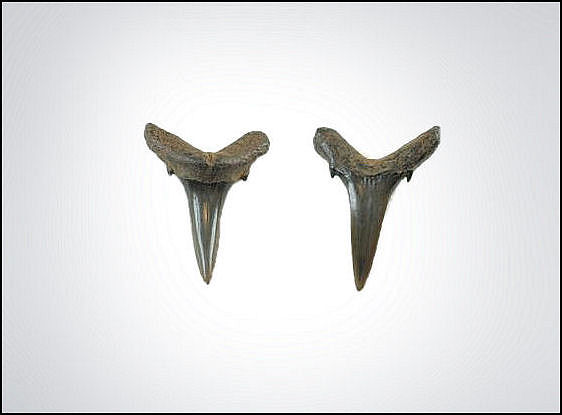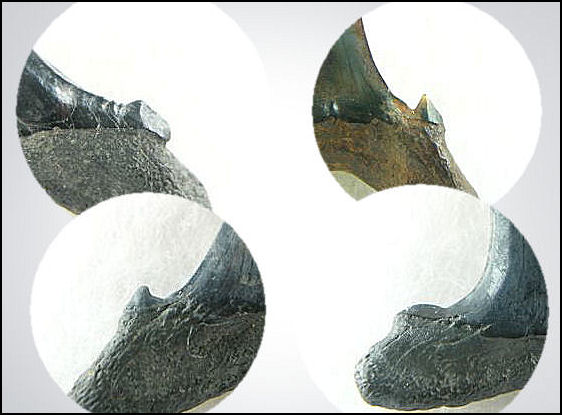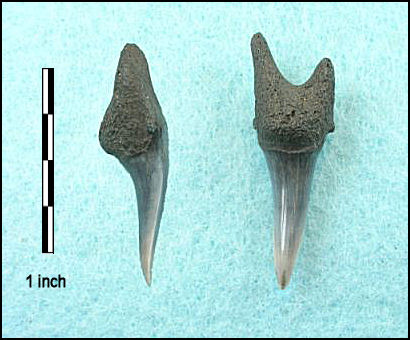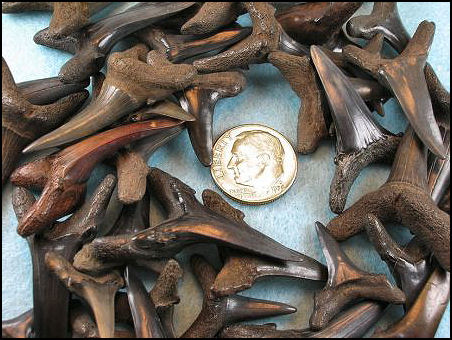|
Sand Tiger Age - Miocene Occurrence - Abundant The teeth of Carcharias cuspidata are a common find in NJ. These teeth are large and robust, with a smooth lingual surface and nutrient groove*. Average tooth size is between 1/2 to 1 1/2 inches with a maximum reaching upwards of two inches. There is a large diversity in this group which is further compounded by differences between the upper and lower teeth. Except for the very front anterior teeth, the root lobes of Carcharias cuspidata do not have the acute angle characteristic of the sand tigers. Instead the roots form a distinctive “U” shape. Anterior teeth posse reduced cusplets . Lateral teeth have a flatter root with more obtusely splayed root lobes. There is a large diversity in the cusplets of the lateral teeth, ranging from pointed, triangular to low and serrated. The cutting edge of C. cuspidata is near complete on the anterior teeth and complete on the laterals. Please note the additional comments at the bottom of this page.
Carcharias cuspidata displays a wide range of tooth forms.
Only the very front anterior teeth have the root lobes with the acute angle so
Except for the very front teeth the roots on the anterior
teeth
form
The upper
lateral teeth are
distally inclined while lower laterals are straight or
only
The cusplets on the lateral teeth can range from serrated to triangular,
Lower jaw first anterior tooth (parasymphyseal)
The teeth of C. cuspidata
are somewhat problematic. The large diversity of tooth forms * For a sand tiger the nutrient grove of C. cuspidata tends to be weak. Stream wear and/or poor root fossilization may result in the nutrient groove not being visible at all.
|
|



